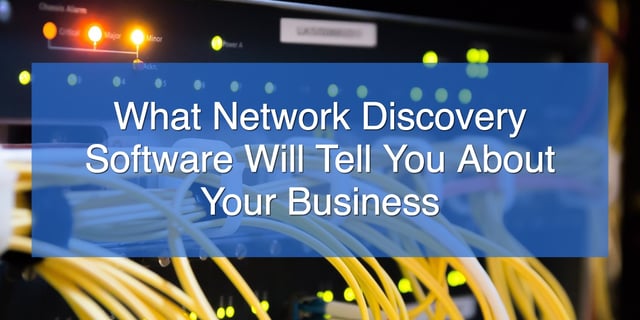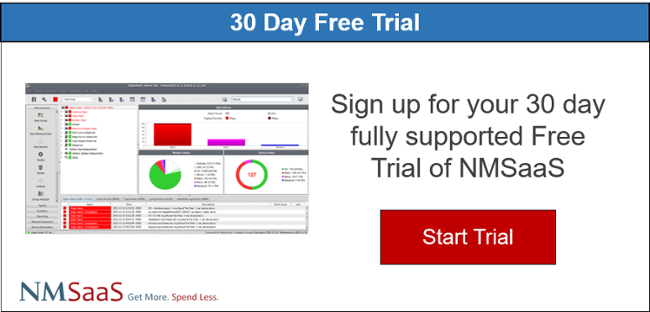A modern business is made up of dozens, often hundreds, of individual devices, computers, appliances used by the company and employees. Some host websites and resources, others are personal endpoints, and some are resources shared by entire departments or the business as a whole. All of these physical technological assets come together to form your businesses' overall network made up of connected devices. In fact, everything that your central router provides with a local IP address, not matter how small or seemingly insignificant, technically counts as a piece of your network, can use up bandwidth and resources, and can create vulnerabilities in your system if not properly monitored and secured.
Do You Know All the Devices on Your Network?
One of the most important questions your network admin can as themselves is whether or not they know exactly how many devices are on the network and who controls them. If the answer is 'No', then your business could be left open to attacks and infiltration through an undetected and unmonitored endpoint or a piece of malware that has already slipped in can do damage by controlling an unsecured device. Because the first step to security is awareness of what needs to be secured, network discovery software is vital to your network admin's suite of business security tools.
Of course, network discovery isn't just a one-time thing. A business' network architecture is constantly changing even if the core structure stays the same. Every time you add a computer, server, or device to the environment and an IP address is assigned to it, even just an internal IP, that is added to the network and anything that controls or has access to the network also has access to your devices. Perhaps even more importantly for constant network discovery use is when people come in with their own devices. If your company feature a wifi signal, and most do these days, then every personal phone, tablet, or similar mobile device brought in by an employee, client, or business partner is at least temporarily on your network. This means that it's more than worth your while to keep an eye on not just the basic network infrastructure, but to monitor minor additions and removals every day.

Personal Computers
Perhaps the easiest piece of the puzzle of network assets to understand is the inclusion of personal computers. Depending on the business style of your company, this is usually some combination of desktops, laptops, and "tab-tops" which are high-end mobile devices that work much in the same way as laptops. These are the computers you and your employees work on and with every day and are usually a consistent part of the network. Employees who take their laptops home for the night or for remote work will leave the network and then auto-reconnect when they return. Network discovery should give you a clear map of these computers and update you when a new one enters or leaves the wifi range.
Network Servers
Not every computer in your network will be someone's workstation. In most companies, there's at least one or two networked servers and sometimes many more than this. These, more often than not, are 'headless' Linux boxes that are accessed by your admins and IT team via remote SSH terminals. A company's network servers are usually used to host websites and data that needs to be shared throughout a department or the business as a whole. There might, for instance, be a dedicated server for hosting the databases needed for your business software suite, financial management, or the high volume of data the marketing department needs for in-depth analysis.
Routers and Gateways
Certain items that will be shown by your network discovery software will be part of the network infrastructure itself. Routers and Gateways are both devices that are used to manage internet and network access to other devices. A wifi router, for instance, provides a certain radius of wifi signal to your office. Depending on the size of your floor space and number of floors, you may have one or several wifi routers. Routers usually also have network cable ports which can supply non-wifi endpoints with network and internet access. Gateways, on the other hand, regulate traffic between two dissimilar networks and reduce network traffic.
Printers and Networked Appliances
One thing that almost all businesses have on their network, even in the digital age and now the mobile era, is at least one printer. Printers, copiers, scanners, and others in their family of office appliance tend to be networked so that multiple employees can send print orders from their varied desks and offices. This allows them to send the documents they've been working with to the print queue in order to get paper copies of same, then go pick them up with the print job is done. Even private printers stored in someone's personal office may appear on the network because they're connected through the computer in that office. If your office has one or more printers or other networked devices, expect to see them during network discovery.
Personal Smartphones and Tablets
Personal mobile devices are one of the most important parts of network discovery because they change every day. As work shifts begin, employees arrive with their various phones and tablets in pockets and bags and the devices automatically connect to your wifi if authorized, then leave your network when your employees head out to the field or home from the office. Mobile devices on your network are a potential gap in security through which malware or simple insecure data sharing can slip through, so extra security protocols for wifi connections are never a bad idea. On an interesting note, if you can accurately identify which mobile connection belongs to each employee, it will become easier to note if someone brings in a new device into the network and whether or not that person and their device are authorized.
Internet of Things (IoT) Devices
Many companies have eagerly adopted the wifi-enabled world of IoT devices. From security cameras to smart lights to flower pots that water themselves, the idea of a 'smart home' has quickly spread to 'smart business'. However, IoT manufacturers are not standardized like Windows, Apple, Linux, or even Android OS's. Many IoT devices are surprisingly easy to hack with minimal to no internal security protocols and no way to add them to the functionality. If your business uses any IoT devices, they will show up on network discovery and should be handled with care. There have already been a few waves of IoT malware, though most pose more danger to your device than your company so far. Until IoT gets more reliable in terms of security, it's best to keep them on the other side of a hefty firewall just in case.
The bigger your company and IT infrastructure, the more important regular use of network discovery software becomes. From your known workspace computers to employee mobile devices that come and go, you can't properly optimize and defend your network without knowing all of the devices that have access to it along with who those devices belong to, what their purposes are, and how much risk they can pose as a possible intrusion point. With network discovery, you won't miss a single one and can even identify unauthorized connections and activity.


